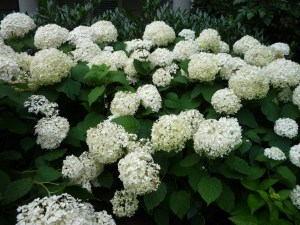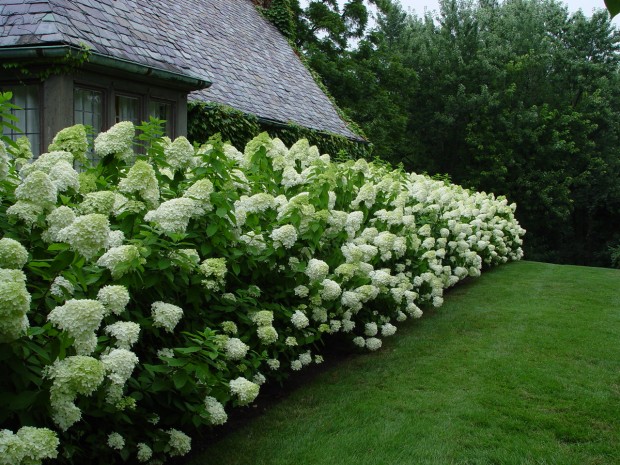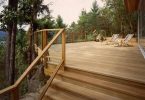Hydrangeas+ Variety Guide
Growing hydrangeas is a great way to add color and fullness to your garden. If you want to grow hydrangeas, you’ve come to the right place!
The Hydrangea, a gorgeous flower with big, bountiful blooms, can improve the curb appeal of any home. It’s a bona fide flower garden showstopper! Here is everything you need to know to plant and maintain your hydrangeas!
It can, however, be finicky to grow. It blooms on either “new wood” or “old wood.”
- New wood refers to the stems that have just developed on the plants during the current growing season.
- Old wood refers to the stems that have been on the plant since the summer before the season in which they are currently blooming.
Always remember that spring and fall are the most ideal planting seasons.
However, if you are growing hydrangeas in a container, you can plant them at any time because their roots are raring to go.
What type of hydrangeas do I have?
Type of Hydrangea #1: Annabelle
 Photo Source | Height: 3-5′ Blooming Season: June-Sept Sun: Full Sun to Partial Shade |
These beauties bloom on new wood in a soft ivory shade. This means that even if you prune them to the ground, they will regrow for next season.
Sounds too good to be true, right? Well, you are right. There’s only one issue: their heads can become so large that they will start to bend down from the weight. This can be avoided by tying them stems together, or making sure the stems are nice and durable when you are buying them.
For the northern climates, the Annabelle is best.
Type of Hydrangea #2: Limelight
 Photo Source | Height: 6-8′ Blooming Season: July-Sept Sun: Full Sun to Partial Shade |
Limelight hydrangeas come in a stunning chartreuse green and bloom on new wood.
These hydrangeas usually grow as wide as 6 ft. In spring, they bloom into a soft lime green and transform into a subtle pink in the fall.
The Limelight hydrangeas can also be substituted as a border or even a hedge.
Type of Hydrangea #3: Macrophylla
 | Height: 6-10′ Blooming Season: June-Sept Sun: Full Sun to Partial Shade |
How can I change my Hydrangea Macrophylla’s color?
| Change Color to Blue | Change Color to Pink |
| 1. Mix 1/4 ounce of aluminum sulfate per 1 gallon of water. 2. In spring, add water solution to the ground surrounding the plants 3. Repeat every 3-4 weeks (maximum 3 times a year) | 1. In spring, add ground limestone around plants. Add 4 lbs of limestone for each 100 square feet. 2. Water plants. 3. Repeat steps 1 and 2 in the Fall. |
It is also important to note that in most parts of the country, with the exception of the far east and west, the plant will only produce foliage.
They rarely need to be pruned — the only exception is when there is dead wood on the plant. A mistake most people make is that they prune them too soon. What you may not know is that your plant is already in the works of creating buds for next season. If you prune them too soon, nothing will grow the following season.
Hydrangea Macrophylla can grow to be very large and round-shaped.
Type of Hydrangea #4: Paniculata
 Photo Source | Height: 6-10′ Blooming Season: June-Sept Sun: Full Sun to Partial Shade |
This is by far the easiest one to maintain and a favorite among homeowners for its simplicity.
The hydrangea will grow to be quite high and is usually used as the centerpiece of a garden for its beauty.
The Paniculata comes in a cone-shaped bloom that grows on new wood.
Your Questions Answered…
There are 5 different types of hydrangeas.
1. Hydrangea macrophylla (aka. bigleaf hydrangea)
Color: Blue/Pink/White
2. Hydrangea arborescens (aka. smooth hydrangea)
Color: White
3. Hydrangea paniculata (aka. panicle hydrangea)
Color: White
4. Hydrangea quercifolia (aka. oakleaf hydrangea)
Color: Starts out as white then changes to purple/pink
5. Hydrangea anomala ssp. petiolaris (aka. climbing hydrangea)
Color: White
6. Hydrangea serrata (aka. mountain hydrangea)
Color: Pink with alkaline soil and blue with acidic soil
For more inspiring ideas, click here.
For more unique items for your home, click shopCHT.com.
Latest posts by Frankie Flowers (see all)
- Is growing your own food worth it? - July 2, 2025
- Hydrangeas+ Variety Guide - July 2, 2025
- 5 Easy Shrubs for Your Landscape - July 2, 2025







I have grown one for 15 years and love the variety of colour just one plant can produce. I understand it has to do with the acidity/ alkaline differences in my soil…
I have several different Hydrangea’s and never knew what was what. Now I have the names thanks